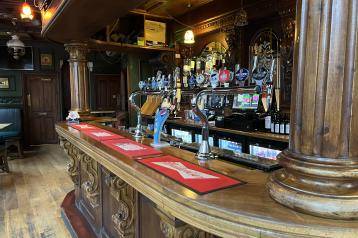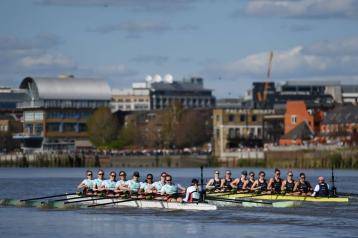
Brackenbury Primary School pupils holding their eco-schools green flag
Ten new air quality sensors have been installed near selected primary schools across Hammersmith & Fulham.

This follows the introduction of a pioneering new Clean Air Neighbourhoods programme that was announced last week. The sensors will help track dangerous air pollution levels as we work to clean our local air.
An additional 25 air quality sensors are set to be installed at other local primary schools by the end of the year.
Cllr Wesley Harcourt, H&F Cabinet Member for Climate Change & Ecology, said: "We'll use these new sensors to ensure that our new Clean Air Neighbourhoods programme is having a positive effect in reducing air pollution near schools."
Tracking pollution levels
The new sensors are attached to streetlights as near to the school entrances as practically possible. They will help measure local concentrations of health impacting air pollutants, including nitrogen dioxide (NO2) and particulate matter (PM2.5).

The first 10 primary school sites include:
- St Augustine's Catholic Primary School in Disbrowe Road, W6
- Brackenbury Primary School in Dalling Road, W6
- John Betts Primary School in Ravenscourt Road, W6
- Flora Gardens Primary School in Dalling Road, W6
- Addison Primary School in Addison Gardens, W14
- Larmenier and Sacred Heart Catholic Primary School in Brook Green, W6
- St Mary's Catholic Primary School in Masbro Road, W14
- Langford Primary School in Gilstead Road, SW6
- Thomas's Academy in New King's Road, SW6
- Sulivan Primary School in Broomhouse Lane, SW6.
This will be used in conjunction with our current network of air quality monitors in South Fulham, which is already home to Europe's densest network of Air Quality sensors as part of the existing Clean Air Neighbourhood.

Impact on schools
Researchers from Kings College London found that more than 12 per cent of London's total area exceeded legal and healthy limits for nitrogen dioxide in 2010, linking the spike in toxic emissions to the growing number of polluting road vehicles.
The area included 979 schools attended by a quarter of London's school population – 328,000 pupils – with children attending schools in Inner London boroughs and poorer parts of London being disproportionately affected.
Their ten-point plan to clean up London's air included a call to restrict polluting vehicles from entering London.
Air pollution inside the classroom
Local schools are invited to apply to the Schools' Air quality Monitoring for Health and Education programme (SAMHE) – a new programme to help understand air quality inside local schools.
Poor air in classrooms can also have an impact on pupils' concentration levels and their health, affecting both attendance and attainment.
By signing up to be a SAMHE pioneer, participating schools will receive a free air quality monitor to measure air pollution inside their classrooms.
Students will be able to use the monitors to run hands-on experiments, access air quality data via app, and track pollution levels over time. Schools can register their interest here.
Want to read more news stories like this? Subscribe to our weekly e-news bulletin.




